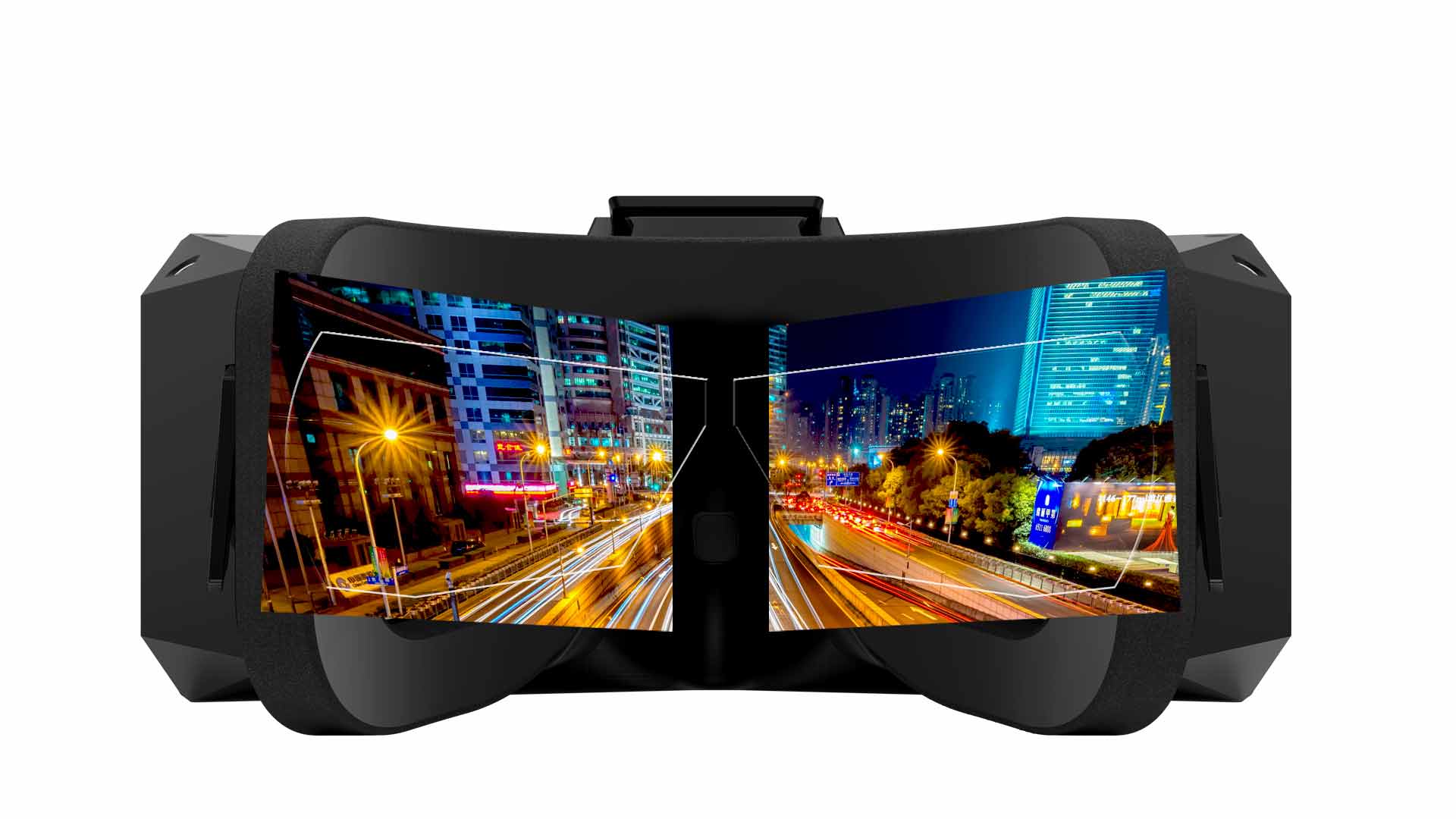StarVR unveiled a new VR headset at SIGGRAPH 2018 with an exceptionally wide field of view designed for commercial and enterprise applications.
The StarVR One covers a 210-degree horizontal and 130-degree vertical field of view, which the company said represents “nearly 100 percent” of the human visual field including, crucially, the peripheral areas that too often make VR experiences feel like they’re being viewed with tunnel vision.

Star VR says its new headset represents nearly 100% of the natural human feild of view.
StarVR
Among the headset’s other luxe features for business customers are custom AMOLED displays that refresh at 90 fps, custom fresnel lenses, Tobii eye-tracking technology and dynamic foveated rendering (meaning the system provides the highest-quality image at the area the user is focusing on, putting processing power where it matters), and a system for automatically measuring and compensating for a user’s interpupillary distance — an adjustment that typically has to be dialed in manually.
By the way, that eye-tracking technology doesn’t go to waste after the real-time experience is over — StarVR can distill information about user intent from the eye-tracking data.

StarVR’s “full RGB” pixel layout reduces the infamous screen-door effect
StarVR
StarVR didn’t reveal a precise pixel resolution for the displays, but said they have 16 million subpixels with a “full RGB per pixel arrangement.” As explained to StudioDaily by a StarVR rep, that reduces the “screen-door effect” commonly seen in VR headsets that only sample two colors per pixel, green/red and green/blue. Expressed as pixel density across the field of view, the StarVR One has reached 16 pixels per degree, according to the rep.

The new HMD will be available in two different versions. The Star VR One will incorporate SteamVR 2.0 tracking out of the box, while the StarVR One XT has active optical markers that work with optical tracking systems.
The company said its SDK is designed to make it easy to develop content specifically for its wider field of view, including content originally developed for other platforms. The StarVR One also has a dual-input SLI mode to maximize rendering performance.
StarVR: www.starvr.com
Did you enjoy this article? Sign up to receive the StudioDaily Fix eletter containing the latest stories, including news, videos, interviews, reviews and more.










